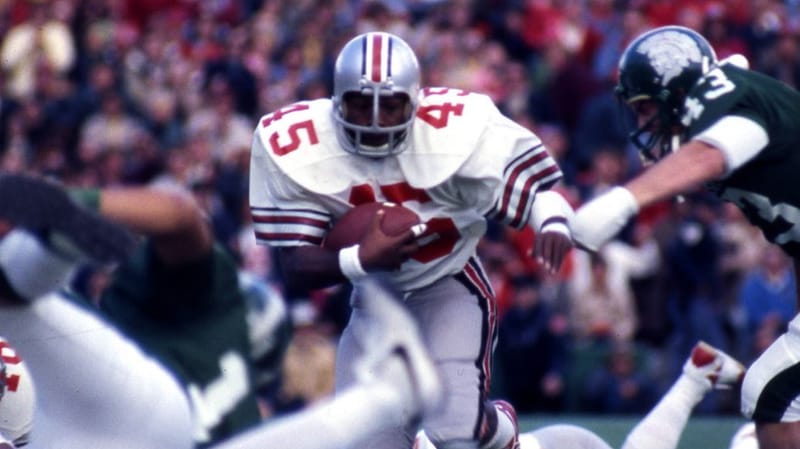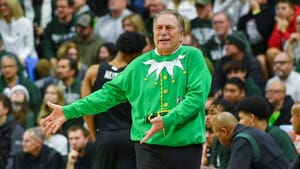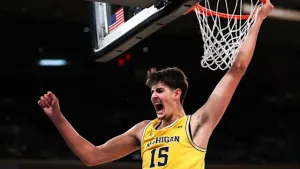Nickels and Dimes: 1975 Ohio State
A new series for OTR that should be enjoyed by three or four of you...

SHOPWORN TOPICS AT LEAST MARGINALLY REFERENCED BELOW THAT YOU CAN RANT ABOUT IN THE COMMENTS WITHOUT EVEN READING THE ARTICLE: 1) Who counts as a blue blood? 2) Poll era national title controversies 3) 1973 Ohio State/Michigan tie, resulting tiebreaker controversy 4) Archie Griffin's two Heisman trophies
Hi! If you have any familiarity with my byline, it is probably because you have habituated yourself to automatically scrolling down to the comments when seeing it. If this is not the case, then you might be one of the select few oldsters, er sophisticates, who enjoys reading historical pieces. If you have bothered to read this far, then that is ever more likely the case and you should read on because do I have something interesting for you!
Today we're inaugurating "Nickels and Dimes." It will be a series throughout the fall that highlights the most interesting (usually, but not always, meaning "most successful") B1G teams (meaning current B1G teams, not just those in the B1G at the time) in years ending in 5 and 0 (get it?) for the last 50 years.
We're going to start with 1975 and work forward chronologically. Today we'll look at Ohio State and our next installment will be UCLA. And that will be that for 1975. Usually each year will get three or four parts, but 1975 was a long time ago, and that season is pretty linear from a B1G perspective. So, lets have at it!
When the 1975 season kicked off Woody Hayes was 62 (so was Bear Bryant, FWIW) and it was his 25th season at Ohio State. So, while it wasn't necessarily the case that 1975 represented his last, best chance at one more national title, everybody knew there weren't a lot of chances left. Hayes was one of the most decorated coaches in CFB at the time, holding consensus titles in 1954 and 1968, and a share of the 1957 title (the UPI poll). (If you want to talk about the FWAA in 1961, that's fine, but Alabama won the AP and UPI polls.) But in more recent years, the Buckeyes had experienced two very painful near misses that only heightened the sense of urgency.
In 1970, the "super sophs" of the '68 title team were seniors. With the additional motivation of an upset loss to Michigan (and first-year coach Bo Schembechler) in 1969, the Buckeyes were ready to roll. And roll they did...through the regular season. Starting the season at #1, the Buckeyes went 9-0. However, they fell from #1 with a 48-29 win over Illinois, and the dropped all the way to #5 as the offense bogged down in November, scoring 24, 10, and 20 points in their last three regular-season games.
That said, the season finale was a 20-9 win over undefeated and #4 Michigan, which was good enough to vault the Buckeyes back to #2, trailing only defending national champion Texas. When Texas fell to Notre Dame, the AP championship was there for the taking (The UPI still handed theirs out before the bowl games and had already awarded it to Texas).
But in the Rose Bowl, the Buckeyes lost to an 8-3 Stanford team that had already lost to a mediocre Purdue squad (that Ohio State did struggle with, beating only 10-7) in the regular season. Heisman Trophy winner Jim Plunkett led two fourth quarter TD drives to erase a 17-13 Buckeye lead, and Stanford won 27-13, opening the door for Nebraska to grab the AP title.
1973 was even more heartbreaking. Most old-timers will tell your this was Woody's best team, and many of the advanced numbers back that up. OSU started the season #2 this time, but ascended to #1 by the first week of October. After nine games the Buckeyes were 9-0 and had outscored their opponents 361-33 (i.e., basically 40-4). However, 1973 was also probably Bo Schembechler's best Michigan squad and you likely already know what happened. #4 Michigan and #1 Ohio State played to a historic 10-10 tie. Ohio State won the, um, highly controversial tiebreaker vote, but fell to #3 in the AP poll, behind Alabama and Oklahoma. Alabama was undefeated AND untied, so the UPI gave them their national title.
[Sorry, but we have to stop for just a second. The 1970s were the decade of the blue blood, and 1973 might have been the blue bl00d-est year of them all. Notre Dame--NOTRE FREAKING DAME--was undefeated and untied at 9-0, but stuck at #5 behind OSU and Michigan after their famous tie. But, once they beat a mediocre Miami team, they managed to jump them both to #3. Heading into the bowls, the top 8 was Alabama, Oklahoma, Notre Dame, Ohio State, Michigan, Penn State, USC, and Texas. Swap out Penn State for Nebraska and that basically is your list of traditional blue bloods.]
After Notre Dame ascended to #3 following their defeat of Miami, and the Alabama/Notre Dame Sugar Bowl was set, Ohio State's national title chances were dead. Perhaps because the pressure was off, but probably because they were just that good, the Buckeyes throttled USC 42-21 in Pasadena, the only B1G Rose Bowl victory of the 70s. Notre Dame's win over Alabama in a thrilling Sugar Bowl might have been enough to jump OSU even if OSU was undefeated and untied, but I really don't think so. USC went 9-2-1 in '73, tying Oklahoma who finished #2, losing to AP national champ Notre Dame by 9 (in South Bend), and losing to OSU by 21. The tie with Michigan cost OSU a national title.
So, yes, there was some urgency in 1975. But the 1975 squad showed out. Behind Archie Griffin– who, no, didn't deserve his second Heisman--the Buckeyes opened 4-0 with wins over ranked Michigan State, Penn State, and UCLA squads. The last of those wins, 41-20 over UCLA, was enough to move Ohio State to #1 in the AP poll even thought #1 Oklahoma hadn't lost. The Buckeyes dominated the #13 Bruins in L.A. in a game they led 38-7 deep into the 3rd quarter.
From there, Ohio State mostly dominated. And Oklahoma did drop a game in November, so when #1 Ohio State defeated 8-0-2 and #4 Michigan in The Game, everybody knew the national championship puck was on Ohio State's stick. (Texas A&M and Arizona State were both also undefeated and untied, but A&M lost their season finale to Arkansas, and Arizona State was still in the WAC at the time, so not a national title contender).
If you want to nitpick, Ohio State struggled to beat a bad Indiana team (shout out to HC Lee Corso!) 24-14, but other than Michigan every other B1G victory was by 21+ points. And struggling against Indiana is still better than losing to Kansas by 20 like Oklahoma did. And Oklahoma seemed locked into #2 following A&M's loss since the other 1-loss power conference teams at the end of the regular season were Alabama (who lost to a good Missouri team that Oklahoma beat), Nebraska (who Oklahoma drilled 35-10), and A&M (whose loss to Arkansas cost them the Cotton Bowl spot). Ohio State was a clear, close to unanimous, #1 heading into bowl season. What's more, USC ended the regular season on a four-game losing streak meaning that all that stood between Ohio State and a third (or fourth) national title for Woody Hayes was a UCLA team that the Buckeyes had already routed in September. What could possibly go wrong?
In our next installment, we'll take a look at the '75 Bruins and the 39 year-old head coach who had to figure out a way to take down Woody Hayes and his Buckeye juggernaut.



